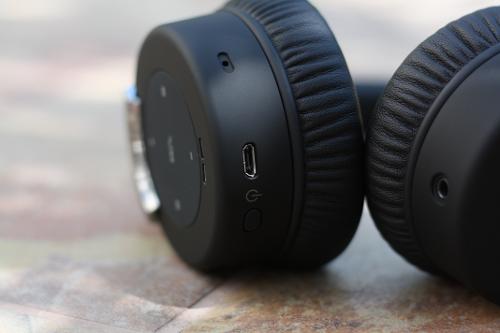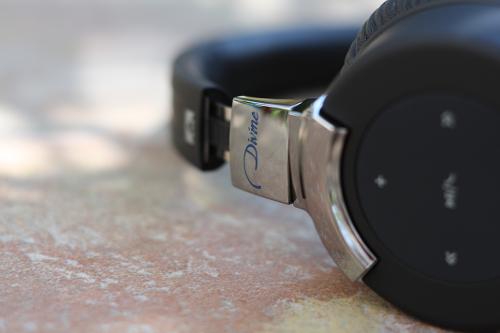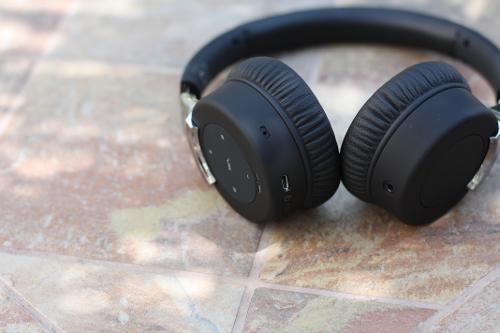[color=rgba(0, 0, 0, 0.8)]

[/color]
[color=rgba(0, 0, 0, 0.8)]I first heard about XTZ two weeks back. A Head-Fi’er was asking for suggestions on a home-audio system, and someone mentioned stylish, yet minimal, surround sound systems that would fit his budget — an XTZ Dolbe 5.1 system. From there, I looked into this “XTZ” company. Turns out, they also make headphones, and brought all of their sonic mastery to the table when designing them. The Headphone Divine, the product I am reviewing today, is a culmination of said expertise, and it really shows.[/color]
[color=rgba(0, 0, 0, 0.8)]You can buy the Headphone Divine from XTZ’s for $180 on official website
here.[/color]
[color=rgba(0, 0, 0, 0.8)]
Disclaimer: This review is based upon a sample unit provided to me by a manufacturer in exchange for my
honest opinion and un-edited words. I do not profit
in any way from the writing of the review. I would like to thank Berthold at XTZ for providing me with a review unit of the Headphone Divine.[/color]
[color=rgba(0, 0, 0, 0.8)]
Preference and Bias: Before reading a review, it is worth mentioning that there is no way for a reviewer to objectively pass judgment on the enjoy-ability of a product: such a thing is inherently subjective. Therefore, I find it necessary for you to read and understand what I take a natural liking to and how that might affect my rating of a product.[/color]
[color=rgba(0, 0, 0, 0.8)]My ideal sound signature would be an extended sub-bass with a leveled, but textured, bass. The mids should be slightly less pronounced than the treble, but still ahead of the bass. I prefer a more bright upper range.[/color]
[color=rgba(0, 0, 0, 0.8)]
Source: The Headphone Divine was powered via Nexus 6P -> Creative Sound Blaster E3 -> HP or over Bluetooth. All music was served as FLAC, ALAC, or as 320Kbps Mp3. In general, the Sound Blaster E3 configuration sounded the best.[/color]
[color=rgba(0, 0, 0, 0.439216)]Sound Signature[/color]
EDIT: I configured my DSP app wrong. Not only was it configured for the wrong
headphone, it was on the
wrong preset — boost 1 instead of reference. The
paragraph below is now outdated and wrong. While it’s barely been a day since I’ve put out the preview, I believe I owe my readers and XTZ an apology. My lack of attention to detail compromised the reliability of my review, and I’ll do my best to rectify my process to ensure this does not happen in the future.
[color=rgba(0, 0, 0, 0.8)][The Headphone Divine has a compatible smartphone app. It allows you to apps certain modifications to the firmware and adjust the way the Headphone Divine sounds. The feature is refereed to as DSP. I found DSP to make the listening experience for me generally unpleasant, and cut out a lot of the detail I was hearing without the DSP. The following analysis is done with DSP off. I will provide an additional section where I give my general thoughts on the sound with DSP on].[/color]
[color=rgba(0, 0, 0, 0.8)]
Bluetooth Performance[/color]
[color=rgba(0, 0, 0, 0.8)]The Headphone Divine performs so well over Bluetooth, I almost don’t want to use the included cable. It’s far superior to my Ghostek SoDrops (but costs almost twice as much), and outperforms many wired in-ear solutions I’ve tested such as the First Harmonic IEB6, Accutone Gemini HD, and Mee Audio M6 Pro. A mentionable example of such sonic prowess is the treble retrieval in
Happy Song by Bring Me the Horizon. Frankly, it’s great. Background details that don’t come through on the Gemini HD are present and clear on the Headphone Divine, even with the treble filters installed on the Gemini. Long story short, while listening over a good DAC via a wire will bring you the best performance the Headphone Divine can offer, its performance over Bluetooth isn’t anything to scoff at.[/color]
[color=rgba(0, 0, 0, 0.8)]
Treble: Songs used:
Supermassive Black Hole, Arise, Fade Into Darkness[/color]
[color=rgba(0, 0, 0, 0.8)]Treble performance is, in my opinion, the highlight of the Headphone Divine. Retrieval is really good, and provides a large amount of detail, even in the higher frequencies. It also doesn’t sound like there are any harsh peaks in the treble’s frequency response, making listening for extended periods of time rather easy on ears. The treble of Supermassive Black Hole meshes well with the rest of the song, but can sometimes smooth out too much.[/color]
[color=rgba(0, 0, 0, 0.8)]Arise was fun to listen to. General transparency was good, but faded away during the chorus. The high-hats became cluttered and one dimensional; a real shame considering how well the rest of the song was being reproduced.[/color]
[color=rgba(0, 0, 0, 0.8)]Fade Into Darkness really showcased the Headphone Divine’s ability to reach into the oft-ignored frequencies of the treble and pull out details that just aren’t audible in lower-caliber setups.[/color]
[color=rgba(0, 0, 0, 0.8)]
Mids: Songs used:
The Drift, Jars, I Am The Highway[/color]
[color=rgba(0, 0, 0, 0.8)]I Am The Highway had detailed strumming of guitars, and a good focus on the vocals. The flange effect on the lead guitar resolved well, but tended to move back and forth in focus rather often. I’m unsure if this is a phenomena related to the actual mixing of the song, or is a result of the particular frequency response of the Headphone Divine.[/color]
[color=rgba(0, 0, 0, 0.8)]The Drift’s violins and piano were pleasant and textured, if not a tad too thin. I found the reproduction to not be any better on the with DSP enabled.[/color]
[color=rgba(0, 0, 0, 0.8)]Jars fared similarly. While overall reproduction was nice, the guitars seemed too rigid, and decayed too slowly. The vocals of Jars were slightly veiled. I found the mids to be rather one-dimensional.[/color]
[color=rgba(0, 0, 0, 0.8)]
Bass: Songs used:
Lights, Bangarang, 99 Problems (Hugo Cover)[/color]
[color=rgba(0, 0, 0, 0.8)]Lights performed well. The mid-bass was able to compliment the other higher-pitched elements of the song well, but never stretched too deeply into the sub-bass (which it should have).[/color]
[color=rgba(0, 0, 0, 0.8)]99 Problems fared better. The knee-thumping rhythm of the drums was as wet as in needed to be, and rather full-bodied. Good attack and decay made it very fun to listen to, without ,giving the impression that the bass was too shallow.[/color]
[color=rgba(0, 0, 0, 0.8)]Bangarang’s reproduction was a little more quirky than 99 Problems and Lights. Since Sonny Moore (aka Skrillex) utilizes a copious amount of sub-bass in all his songs, Bangarang included, the song sounded shallow and surfacey. The bass was veiled where it should have been deep. However, the lack of impact and sub-bass did not correlate to a lack in detail, and much of what is present in bassier headphones is present when listening to the Headphone Divine.[/color]
[color=rgba(0, 0, 0, 0.8)]
Clarity: Songs used:
Throne, Map of The Problimatique, I’m Not Alright[/color]
[color=rgba(0, 0, 0, 0.8)]Unfortunately, the Headphone Divine suffers in separation and clarity when reproducing Throne. This is due to the tinge of warmth in the lower-mids that blows out detail that’s normally there in flatter sound signatures. Ironically, even with DSP enabled, those same details were still not present.[/color]
[color=rgba(0, 0, 0, 0.8)]Luckily, it’s not all doom-and-gloom in the clarity department; I’m Not Alright performed very well, with the exception of guitar detail. The lead electric guitar becomes blown-out and boomy. DSP helped regulate this to some extent, but degraded the song in other ways. The increase in clarity was not worth the cost of general detail.[/color]
[color=rgba(0, 0, 0, 0.8)]
Male Vocals: Song used:
Hotel California, Ashes of Eden, Sunday Bloody Sunday[/color]
[color=rgba(0, 0, 0, 0.8)]Male vocals were consistently a little too thin. Engaging DSP helped a little bit, but cut out much of the small details that were present in the vocals using the standard tuning.[/color]
[color=rgba(0, 0, 0, 0.8)]As with most headphones that produce male vocals too thinly, Ashes of Eden did pull ahead of the rest of the pack. As I’ve mentioned in previous reviews, this is because of the lower average pitch that Breaking Benjamin’s lead singer uses when compared to many other male vocalists.[/color]
[color=rgba(0, 0, 0, 0.8)]
Female Vocals: Songs used:
Stupid Girl, Sweet Escape, Need Your Heart[/color]
[color=rgba(0, 0, 0, 0.8)]Female vocals, when compared to male vocals, were phenomenal on the Headphone Divine. The timbre, attack, and decay of the vocals is better than
every single headphone I’ve tested to date. This is not to say it will outperform every headphone you throw at it, but rather that it’s my first experience with a truly great reproduction of female vocals of this caliber. The Headphone Divine powered through every female vocalist I threw at it, regardless of genre or tempo. Kudos to XTZ, you nailed it.[/color]
[color=rgba(0, 0, 0, 0.8)]
Sound Stage[/color]
[color=rgba(0, 0, 0, 0.8)]Sound staging is average. There is a decent amount of left/right separation, but very little width. There is some height, but conversely, a low amount of depth. Overall, the majority of instruments adopt a center-stage position, with the occasional outlier. I found the upper-right position of the soundstage to be the most likely position for instruments to occupy, barring the center-stage. There is a good amount of air between each instrument, with the exception of high-hats and similarly-pitched instruments. They tended to bunch up and overlap each other.[/color]
[color=rgba(0, 0, 0, 0.439216)]Packaging / Unboxing[/color]






[color=rgba(0, 0, 0, 0.439216)]Build[/color]
[color=rgba(0, 0, 0, 0.8)]
Connectivity and Battery Life[/color]
[color=rgba(0, 0, 0, 0.8)]Connectivity is pretty darn good. The Headphone Divine features NFC pairing and Bluetooth APTx. Connectivity range is good enough to the point where I could leave my laptop (which has a poor Bluetooth reception) in my room, use the restroom, get a snack, and them come back to my room without ever loosing connection.[/color]

[color=rgba(0, 0, 0, 0.8)]Battery life was similarly impressive. XTZ was being rather conservative with their 14 hour battery life rating — I got 19 hours of Bluetooth out of it at a rather high volume. The headphones charge over a standard micro-usb cable.[/color]
[color=rgba(0, 0, 0, 0.8)]XTZ also included a 3.5mm cable that you can use to convert the Headphone Divine into a wired headset. A feature, or engineering decision, I’m rather happy with is the 3.5mm cable completely bypassing the built-in DAC, allowing users with high-end DACs to get the most out of their hardware.[/color]
[color=rgba(0, 0, 0, 0.8)]

[/color]
[color=rgba(0, 0, 0, 0.8)]
Construction Quality[/color]
[color=rgba(0, 0, 0, 0.8)]I’m a little torn on the subject of construction quality. On one hand, I’m impressed with the rigidity of the frame and driver housing. On the other, I’m salty that a pair of $180 headphones is built
entirely from plastic. Yes, that’s right. Even the chrome swivel-heads you see in my pictures are plastic. I would expect at the very least those high-risk components to be built of aluminum, or a similarly strong yet premium-feeling material. Oh, and speaking of swivel-heads, they are way too loose. It makes them feel cheap, and lends me little confidence in the longevity of the connection.[/color]
[color=rgba(0, 0, 0, 0.8)]

[/color]
[color=rgba(0, 0, 0, 0.8)]The ear pads are made from leather, or a convincing synthetic replacement. The top of the headband is made from a similar, but harder, material.[/color]
[color=rgba(0, 0, 0, 0.8)]The headband adjustment system is a simple pull-to-extend mechanism. I feel that, while good in theory, the system is far too tight and difficult to adjust while on the head. If this were slightly looser, I would be much happier.[/color]
[color=rgba(0, 0, 0, 0.8)]
Comfort[/color]
[color=rgba(0, 0, 0, 0.8)]I do not find the Headphone Divine comfortable. It exerts far too much pressure on the ears and scalp. I think that if a vertical swivel was added to the driver-housing, it would help distribute the pressure more evenly. Also, add more padding to headband — it started to hurt after an hour. This is the first pair of headphones I’ve tested that made me take them off within an hour and a half of listening. I’m pretty disappointing with this, as I enjoy the way they sound.[/color]
[color=rgba(0, 0, 0, 0.8)]
Sound Isolation[/color]
[color=rgba(0, 0, 0, 0.8)]Being a pair of on-ears, I don’t really expect very good isolation from the Headphone Divine. It does an okay job cutting out my mechanical keyboard, but ultimately fails to completely isolate it during lulls in my music. Similarly, anyone having a conversation near you won’t have too hard a time of penetrating into that epic Mozart composition you’re listening too.[/color]
[color=rgba(0, 0, 0, 0.8)]
Controls[/color]
[color=rgba(0, 0, 0, 0.8)]The Headphone Divine has a 5-button control scheme, arranged in a circle on the right driver housing. The buttons have a satisfying click to them, and are covered in a rather premium-feeling soft-touch plastic panel. The buttons are as follows: volume up, volume down, fast forward, rewind, and pause/play. My only concern is that it is difficult to locate the buttons on the panel when you are wearing the Headphone Divine. If the actual pressure point was depressed slightly or textured differently, it would be much easier to accomplish what you are trying to do without fumbling around too much.[/color]
[color=rgba(0, 0, 0, 0.439216)]Accessories[/color]
[color=rgba(0, 0, 0, 0.8)]XTZ stocked the Headphone Divine with a micro-usb cable, a male-to-male 3.5mm jack, and a leather carrying pouch. I find the pouch to be big enough to comfortably hold both Headphone Divine itself, and the cables. It also has a rather novel snap-to-close mechanism where the pouch closes itself once once you let go of it.[/color]
[color=rgba(0, 0, 0, 0.8)]

[/color]
[color=rgba(0, 0, 0, 0.8)] [/color]
EDIT: The following paragraphs has been edited. My original impressions of the app were wrong, and based on the my incorrect configuration of the app at the time. All the sentences that are new or edited are bolded.
There are also companion Android and iOS apps for the Headphone Divine.
I find it to be rather useful, allowing you to change the sound signature of the Headphone Divine on the fly. However, I won’t go into too much detail with them, as many other reviewers such as Brokoo on Head-fi have done a
rather good job covering that base.
Summary
After getting my act together regarding the DSP app, my opinions regarding the Headphone Divine have gotten more favorable. The flexibility a
correctly configured DSP app provides is really outstanding. I recognize that not everyone will experience discomfort like I did. And even if you do, I think that the daredevils of you out there who are wiling to weather the storm will surely be impressed with the performance of these Bluetooth champions.



 [/color]
[/color]






 [/color]
[/color] [/color]
[/color] [/color]
[/color]

 [/size]
[/size]

 [/size]
[/size]

